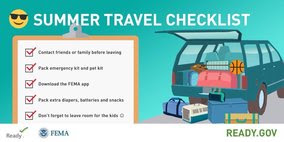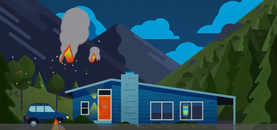
The holidays offer a great time to develop an emergency communication plan with your family.
Knowing how to stay in touch with them in the event of a storm will give you peace of mind. Check out the Prepareathon™ Winter Storm page with free tools, tips, and resources to help you prepare.
Planning starts with these three steps:
Watch this video to learn more about preparing for a winter storm. You can also download the Federal Emergency Management Agency's How to Prepare for a Winter Storm Guide.
|
SPC Jul 13, 2025 0600 UTC Day 1 Convective Outlook
-
SPC 1200Z Day 1 Outlook
[image: Day 1 Outlook Image]
Day 1 Convective Outlook
NWS Storm Prediction Center Norman OK
1253 AM CDT Sun Jul 13 2025
Valid 1...
1 hour ago








